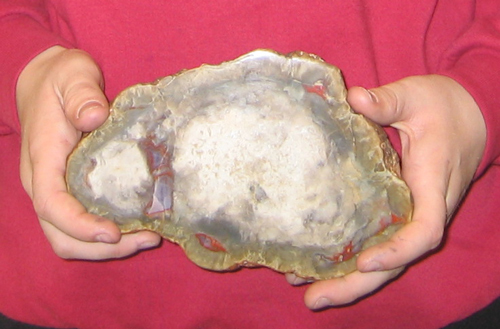Daring Criminals steal Coprolite from London Natural History Museum
Dinosaur Dung is Stolen from the London Natural History Museum
One of the saddest items of news to report for a while, criminals have stolen coprolite (that is fossilised dung), from the Natural History Museum in London. The museum has just published a list of specimens and exhibits that have been lost, stolen or destroyed over the last five years. The dinosaur dung was stolen from an exhibit at the Dino Jaws exhibition in 2006. Exactly what the thieves intended to do with it is unknown, such fossils do have some value but small pieces of coprolite can be purchased for a few dollars from a number of reputable fossil merchants. It is unlikely the thieves would have gained a great deal from the theft.
Coprolite
The problem with coprolite is that scientists cannot be entirely sure what sort of animal was responsible for producing the dung in the first place. This particular specimen, dating from the Late Cretaceous was believed to have been droppings from a large, herbivorous dinosaur, probably a titanosaur, such as Saltasaurus.
Titanosaurs are part of the sauropod branch of the dinosaur family tree. These long-necked, lizard-hipped dinosaurs still dominated the plant-eating faunas of the Southern Hemisphere for much of the Cretaceous. It is thought that some types of titanosaur evolved into the biggest land creatures ever to have existed, with some types weighing over 50 Tonnes or more.
Dinosaur Coprolite
Picture credit: Everything Dinosaur
To view a model of a titanosaur and other sauropod figures: Dinosaur and Prehistoric Animal Models.
Criminals have also helped themselves to 167 scarab beetles originally from South America and a centipede. Another 2 dozen or so scarab beetles were stolen from a car in Vienna, Austria, when they were on loan to the Vienna Natural History Museum.
The theft of the 10 cm piece of dinosaur dung was reported, but police took no further action. After all, it is hardly worth their while putting out a national alert as there would be little chance of retrieving it and if an officer did come across it, we don’t think they would have been able to recognise it. Spotting dinosaur dung is a job for the professionals.
Commenting on the list of thefts and other exhibit incidents, museum director Professor Richard Lane stated:
“All of the items in the collections are of scientific and national value and many are literally priceless. Like works of arts they are completely unique and so cannot be compared to anything else. Consequently it is of great regret when items are stolen or lost”.
As for the coprolite theft Professor Lane went on to add:
“It is true that an item of fossilised dinosaur dung was stolen from the Dino Jaws exhibition; one might question what the thief would do with this.”
With more than 3.8 million visitors a year and anything up to 10,000 people at a time inside the Natural History Museum in South Kensington, such thefts are sadly inevitable. It is a question of balance between allowing visitors access to the exhibits yet being mindful of security.
An entire draw of butterflies was lost in 2005, when a number of items from the entomology department were being moved. A parcel containing mosquito specimens was lost in the post. More than 20 fossil conodonts, an extinct group of small, jawless marine creatures, believed to be some of the most primitive chordates known were destroyed when the box containing them was knocked over and they accidently got hoovered up.
These are the sort of problems the curators have when they are in charge of such a vast collection, a good proportion of which is on display to the public. Still if you get offered some dodgy dinosaur dung from a man in pub, you know what you must do.


